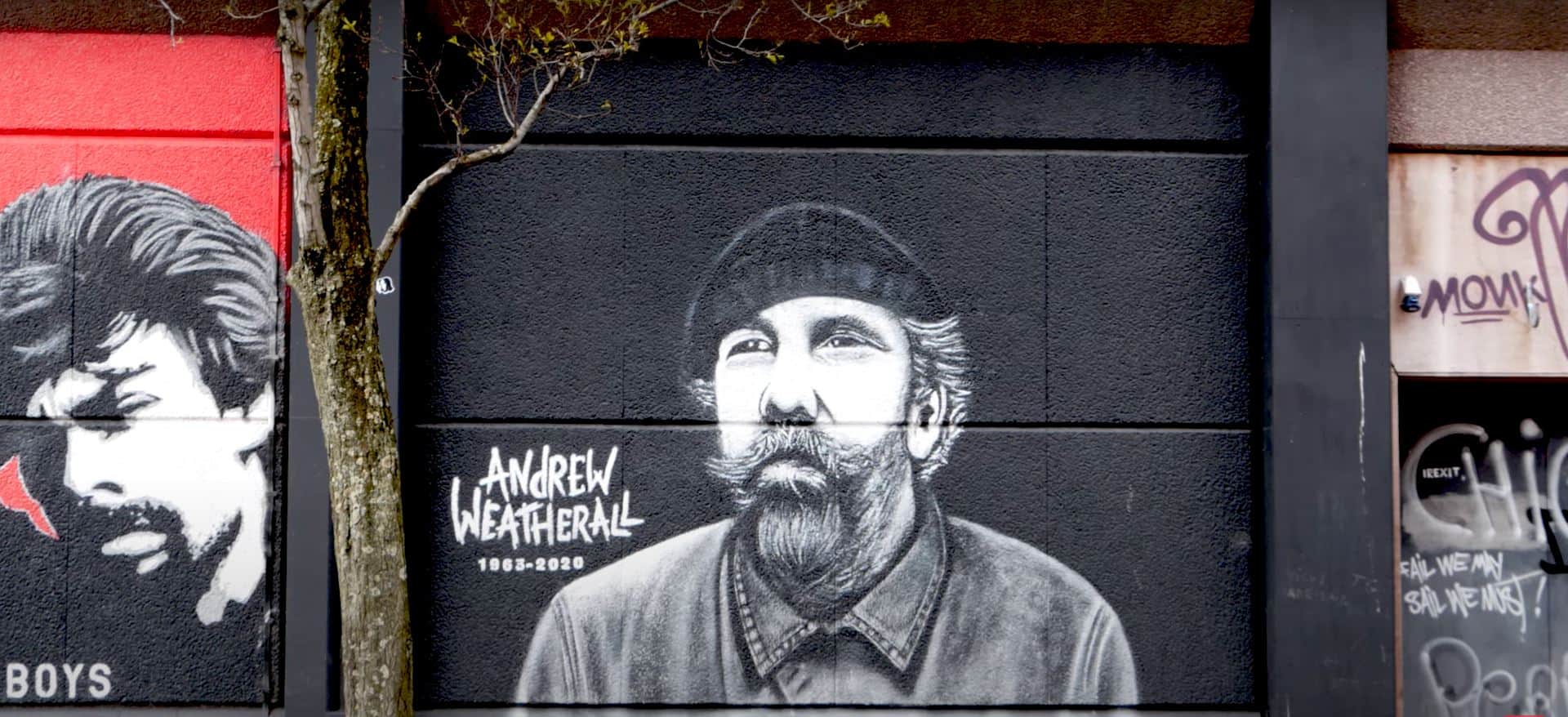Street Art – Cathedral Quarter and Beyond – Belfast

Updated On: April 16, 2024 by Maha Yassin
Belfast, the capital city of Northern Ireland, is known for its rich history, stunning landscapes, and vibrant culture. Among its many attractions, one aspect that has been gaining prominence over the years is its burgeoning street art scene. Particularly in the Cathedral Quarter and beyond, the streets of Belfast have become a canvas for talented artists who use their creativity to transform drab walls into vibrant masterpieces. In this article, we will explore the world of street art in Belfast, its history, its impact on the city, and some of the most notable works in the Cathedral Quarter and beyond.
The History of Street Art in Belfast
Street art in Belfast has its roots in the city’s complex history. The Troubles, a political and sectarian conflict that lasted from the late 1960s to the late 1990s, left a lasting mark on the city’s landscape. Many walls and buildings were adorned with political murals during this time, often conveying messages of division, resistance, and solidarity. While these murals served as a form of expression during tumultuous times, they also left a visual scar on the city.
However, as Belfast began to emerge from the shadows of its troubled past, a new wave of street artists started using their talent to bring a different kind of message to the streets – one of hope, unity, and creativity. This shift marked the beginning of Belfast’s contemporary street art movement.
The Cathedral Quarter – A Hub of Creativity
The Cathedral Quarter, located in the heart of Belfast, is often considered the epicentre of the city’s street art scene. This area, characterised by its cobbled streets, historic architecture, and artistic atmosphere, provides the perfect backdrop for street artists to showcase their work.
One of the most iconic pieces in the Cathedral Quarter is the “Belfast Crane” by the French artist MTO. This towering mural, which depicts a construction crane holding a flower, symbolises Belfast’s post-Troubles transformation and regeneration. It is a testament to the resilience and optimism of the city’s residents.
Another notable piece in the area is “The Deers” by local artist Glen Molloy. This stunning mural portrays a group of deer and has become a favourite among residents and tourists alike. The use of vibrant colours and intricate details make it a must-see attraction.
Beyond the Cathedral Quarter – A Citywide Canvas
While the Cathedral Quarter may be the epicentre, Belfast’s street art scene extends far beyond its cobbled streets. Artists have left their mark on various neighbourhoods, turning the city into a canvas stretching from its heart to its outskirts.
In the Queen’s University area, you’ll find “The Symbiosis of Science and Nature” by the Belgian artist ROA. This mural, which features native wildlife, celebrates the intersection of science and nature, reminding us of the importance of preserving the environment.
In the East Belfast neighbourhood of Ballyhackamore, you’ll discover the work of local artist Friz. His colourful and whimsical pieces bring a touch of magic to the area, brightening up otherwise ordinary walls and alleys.
The Positive Impact of Street Art
Street art in Belfast has transformed the city’s physical landscape and profoundly impacted its cultural and social fabric. Here are some of how street art has enriched the city:
- Tourism Boost: Street art has become a significant tourist attraction, drawing visitors worldwide. This influx of tourists has boosted local businesses, from cafes and restaurants to art galleries and souvenir shops.
- Community Engagement: Street art often involves local communities in its creation. Artists collaborate with residents, schools, and community organizations, fostering a sense of pride and ownership among those living in these areas.
- Revitalization of Neglected Spaces: Many areas adorned with street art were once neglected or considered unsafe. Vibrant and thought-provoking murals have breathed new life into these spaces, making them more inviting for residents and visitors alike.
- Creative Expression: Street art provides a platform for artists to express themselves freely and share their messages with a broad audience. It has also encouraged emerging artists to showcase their talent and gain recognition.
- Promoting Diversity and Inclusion: Street art often addresses critical social issues, including diversity, equality, and inclusion. Many murals convey messages of tolerance and acceptance, promoting dialogue and understanding among different communities.
Exploring Belfast’s Diverse Attractions Near Its Street Art Hub
Belfast’s street art scene in the Cathedral Quarter and beyond is undoubtedly a captivating attraction in its own right. However, there are several other exciting attractions and points of interest nearby that visitors can explore while enjoying the street art. Here are some of the top attractions located in proximity to Belfast’s vibrant street art scene:
- St. Anne’s Cathedral: Located within the Cathedral Quarter, St. Anne’s Cathedral is a stunning example of neo-Romanesque architecture. Visitors can explore the beautiful interior, climb to the top of the spire for panoramic city views, and even attend choral performances and exhibitions.
- Ulster Museum: Situated in the Botanic Gardens area, the Ulster Museum is a treasure trove of art, history, and natural science. Its diverse collections include everything from ancient artefacts to contemporary art, making it a perfect complement to the artistic experience of the Cathedral Quarter.
- Titanic Belfast: A short distance from the city centre, Titanic Belfast is a world-renowned museum dedicated to the story of the Titanic, which was built in the shipyards of Belfast. It offers an immersive and educational experience that delves into the history of the iconic ship.
- Botanic Gardens: Also located in the Botanic area, these beautiful gardens provide a tranquil escape from the urban hustle and bustle. Visitors can stroll through the gardens, admire the Victorian-era Palm House, and appreciate the vibrant flora.
- Crumlin Road Gaol: For a dose of history and a touch of the eerie, Crumlin Road Gaol (jail) offers guided tours that take you through the former prison’s history, including its role during the Troubles. It’s a short distance from the Cathedral Quarter.
- SS Nomadic: Adjacent to Titanic Belfast, SS Nomadic is a perfectly preserved White Star Line ship used to ferry passengers to the Titanic. It’s a fascinating addition to any Titanic-related visit.
- Custom House Square: Within the Cathedral Quarter, Custom House Square is a dynamic events space. Depending on when you visit, you might find concerts, food festivals, or cultural events taking place here.
- Belfast City Hall: Located in the city centre, Belfast City Hall is an iconic city symbol. Visitors can take guided tours to learn about its history, explore the beautiful interior, and enjoy the surrounding gardens.
- Victoria Square Shopping Centre: If you’re in the mood for some retail therapy, Victoria Square offers a mix of high-end and high-street shops. It also boasts a glass-domed observation deck providing panoramic city views.
- Waterfront Hall: This contemporary conference and entertainment venue hosts various events, from concerts and theatrical performances to meetings and exhibitions. It’s within walking distance of the Cathedral Quarter.
These attractions offer diverse experiences, from history and culture to nature and entertainment, complementing the vibrant street art scene in Belfast’s Cathedral Quarter and making it an excellent destination for visitors of all interests.
Last Words
Belfast’s street art scene has evolved from reflecting its troubled past to a vibrant celebration of its present and future. The Cathedral Quarter, with its iconic murals, is the nucleus of this movement. Still, street art has spread throughout the city, enriching its cultural tapestry and making it a must-visit destination for art enthusiasts and tourists alike.
As Belfast continues to evolve and embrace its newfound creativity, its street art will undoubtedly play a significant role in shaping the city’s identity and fostering a sense of unity among its residents. Street art has proven that even in the face of adversity, art can be a powerful tool for transformation and healing, and in Belfast, it is doing just that, one mural at a time.
FAQs
Are there any street art festivals or events in Belfast?
Belfast hosts various street art festivals and events, such as the Belfast International Wall Mural Festival. Check local event listings for the latest updates.
Are there family-friendly street art locations in Belfast?
Absolutely! Many of the street art pieces in Belfast are family-friendly and can be enjoyed by visitors of all ages. Exploring street art with children can be an exciting and educational experience.
Are there any guided street art tours available in Belfast?
Yes, there are guided street art tours led by knowledgeable local guides who can provide insights into the history, artists, and stories behind the murals. These tours are a great way to immerse yourself in the street art culture.
Are there any initiatives or organizations supporting street art in Belfast?
Several organizations and initiatives, such as Seedhead Arts and Culture Night Belfast, actively support and promote street art in the city. They often collaborate with artists to create new works and events.
Can I contribute to the street art scene as a visitor?
While you may not physically create street art as a visitor, you can support the local street art community by attending events, purchasing art, or engaging in meaningful discussions about the art with locals.






